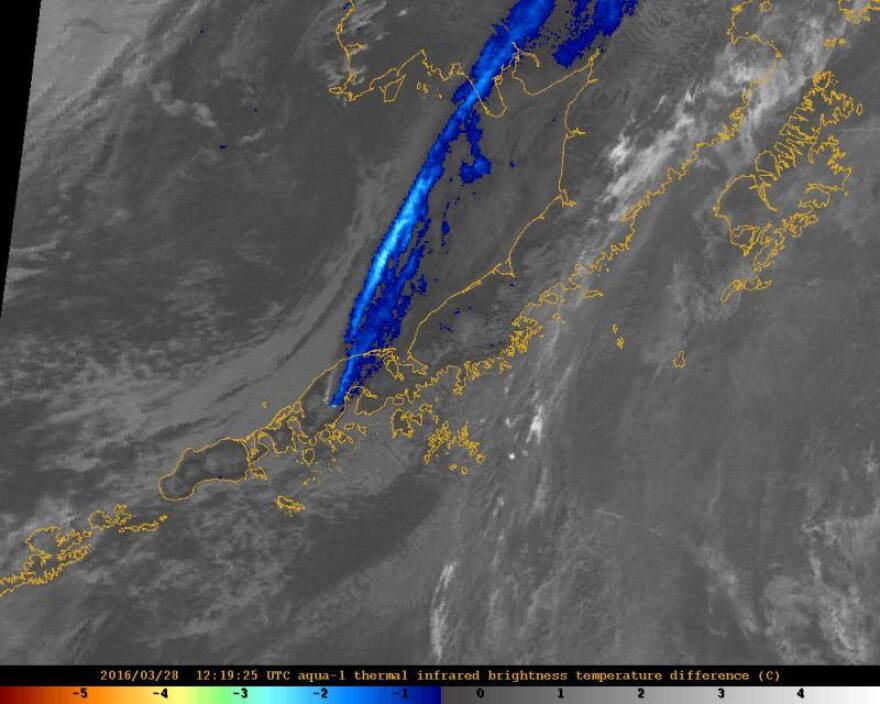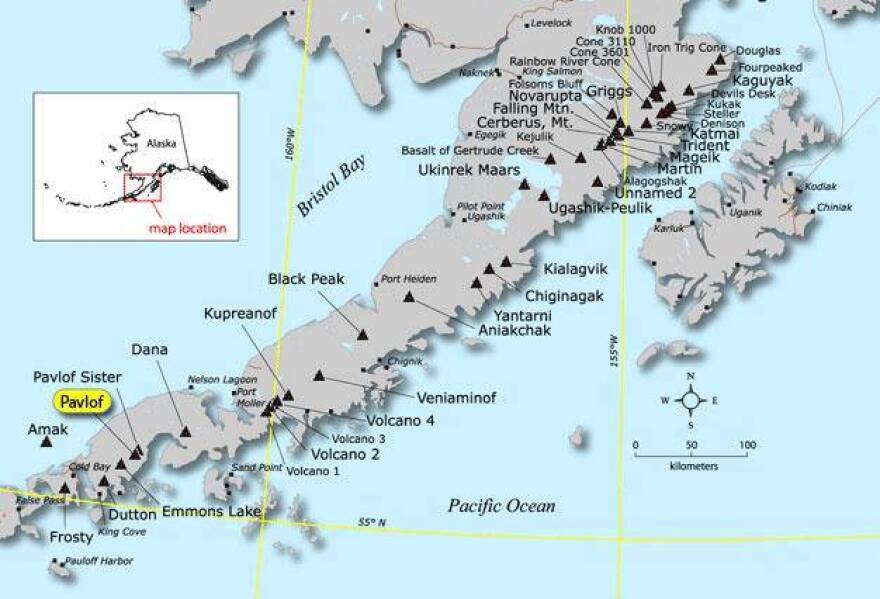Ash from Sunday eruption sent to 37,000', now spreading northeast towards western Bristol Bay.
KUCB, Unalaska: A volcano in southwest Alaska erupted Sunday, sending an ash cloud up to 37,000 feet into the atmosphere. Pavlof Volcano, located at the southern end of the Alaska Peninsula, suddenly began issuing black ash and fountains of lava around 4 p.m. Since Sunday, the ash has been blown northeast towards Western Bristol Bay, according to radar images provided by the Alaska Volcano Observatory.


The erupting volcano presents no danger to Unalaska residents, nor was the eruption accompanied by an earthquake or tsunami threat, says Michelle Coombs, a geologist with the United States Geological Survey.
"We noticed it shortly after 4 o'clock, we could see it in the seismicity. Shortly after that we started getting pilot reports saying they saw a black ash cloud above the volcano. And it continues to be erupting now," Coombs said in a phone interview late Sunday evening from her desk at the Alaska Volcano Observatory's (AVO) office in Anchorage.
The AVO says Pavlof is one of the Aleutian Range's most active volcanoes, with over 40 eruptions in modern history. Pavlof last erupted in 2014, and each eruption typically lasts in duration anywhere from a few days to a few months.
While eruptive activity is fairly common for Pavlof, Sunday's eruption was a surprise.
"It's what we call an open-system volcano, it doesn't give us a lot of warning. The magma can make it to the surface fairly easily, so it kind of sneaks up on us," Coombs said. "And that's why we didn't really have any warning before this afternoon's activity.
For Aleutian residents, the only effects felt from the eruption will be some possible flight diversions or cancellations. The AVO has issued a Sigmet - Significant Meteorological Information - advisory for the area around the volcano, alerting pilots to the growing ash cloud, currently moving to the north.
"Right now planes can just divert around Pavlof to the south, and they've been doing that today, easily," Coombs said.
Just 37 miles northeast of the village of Cold Bay, Pavlof Volcano is in a remote and uninhabited area of the Peninsula.
"There's some local hazards right around the volcano and then communities like Nelson's Lagoon or Sand Point might get some very small amounts of ash fall, depending on which way the wind is blowing," Coombs said. "You're definitely far enough away that with this kind of activity, you're not going to have any ash fall in Unalaska."


